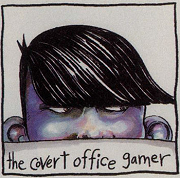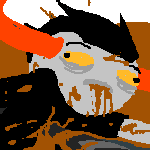|
AFancyQuestionMark posted:"Have a chance at all" is an interesting interpretation of a 10 - 1 score against top level players. The matches demonstrate that it would 100% beat most human players in those scenarios, so I don't know how you're getting the "fundamentally inadequate" reading from this. Yes, all the scenarios of one specific map, with only one opponent, playing only one specific race each. I, too, only ever commute to work on a single, unchanging road, with the exact same vehicles on the road, in the exact same weather conditions, everyday. Which is great if you live in Phoenix any time other than rush hour, I suppose.
|
|
|
|

|
| # ? May 8, 2024 07:51 |
|
Kerning Chameleon posted:Yes, all the scenarios of one specific map, with only one opponent, playing only one specific race each. I, too, only ever commute to work on a single, unchanging road, with the exact same vehicles on the road, in the exact same weather conditions, everyday. First of all, I am not sure why Deep Mind has been drawn into the automated driving debate here, since its research isn't really aiming for that at all. Now, for Starcraft, there is nothing preventing the exact same NN architecture and training techniques from generalizing to other maps and other races. Presumably, it would greatly increase the training time necessary for AlphaStar to play at a pro-level with the even larger number of states and contexts, but it isn't some unattainable distant goal requiring fundamental changes in their work. I wouldn't be surprised if they had another series of showcase matches on different maps, with different races within a couple of months time.
|
|
|
|
Running again with a different map or race would probably be trivial, but creating an agent that can handle multiple maps and race match-ups itself might not be. The fact that they switched out agents every game might be because each agent is relatively inflexible as far as expectations and preferences. edit: actually, what might be interesting is how well it can adapt to modest novel changes that humans adapt easily to. For example, most SC2 1v1 ladder maps are very similar in overall structure, to the point that when a new season with new maps start, I barely even need to adjust my builds, most of the time. Can AlphaStar play competently on a brand new map it's never seen before, that is stylistically similar to ones that it has trained on? Cicero fucked around with this message at 13:37 on Jan 28, 2019 |
|
|
|
Cicero posted:Running again with a different map or race would probably be trivial, but creating an agent that can handle multiple maps and race match-ups itself might not be. The fact that they switched out agents every game might be because each agent is relatively inflexible as far as expectations and preferences. There is actually a relatively small number (compared to usual computation challenges) of ladder 1v1 maps and race matchups in those maps. Couldn't they just train, say, 30 different AlphaStar agents, each on a particular map with a particular matchup like they've already done with Catalyst pvp, and then construct a "super-agent" that simply employs the appropriate agent when it sees what the matchup is? Wouldn't that be functionally identical to some larger network trained on all maps with all matchups?
|
|
|
|
Cicero posted:(Sorry if this just sounds like gobbledygook to anyone who's never played Starcraft) On the other hand, the difference between X, Y and X+1, Y+1 in Starcraft is far less than it is in Go or chess. Similarly, while the amount of possible actions may be higher, the amount of useful actions at any given point often falls into a smaller set. It doesn't need to recalculate all of its moves every single frame, because not that much changes from frame to frame. When it comes to videogames, what matters isn't how many possible states there are, it's in how effectively the AI can narrow down and subdivide the total decision space into just a list of decisions worth taking. Which can be amazingly effective if done right...but also can leave the AI very exploitable if done wrong. Besides, as you pointed out, there's the most important difference: the AI isn't constrained by the interface limitations humans are subject to, and can therefore gain an advantage simply by abusing its superior ability to rapidly micromanage multiple groups. Go and chess are turn-based games where you only move one piece at a time. That's why they're good measuring sticks for AI - there's no skill or speed involved in moving the pieces, so the AI can't get an advantage with superior reaction times or piece-shuffling abilities. In a real-time game where you could potentially move hundreds of "pieces" at once, AI vs human is never going to be a fair contest.
|
|
|
|
Cicero posted:Running again with a different map or race would probably be trivial, but creating an agent that can handle multiple maps and race match-ups itself might not be. The fact that they switched out agents every game might be because each agent is relatively inflexible as far as expectations and preferences. That describes most human players too though, almost every player 'mains' a single race. Like it was a big crazy thing that day9 reached grandmaster with all three races (at the time) and that was just top 200, like that was seen as an absurd feat of skill to be that good across all three, and he still was primarily a zerg player that was vastly better at zerg but was just exceptionally flexible that he could do like sort of good with the other two races. That is the same with most games too, the top players ultra focus on either a single character, or a small roster of characters in games where stuff like counter picking is a thing. Like in high level dota a huge component of strategy is knowing who your opponents are weak at playing and trying to force them into it, and somehow configuring picks to force an opponent into a character they don't play is a major upset that will make the casters jump out of their seat it's such a decisive move.
|
|
|
|
Main Paineframe posted:On the other hand, the difference between X, Y and X+1, Y+1 in Starcraft is far less than it is in Go or chess. Similarly, while the amount of possible actions may be higher, the amount of useful actions at any given point often falls into a smaller set. It doesn't need to recalculate all of its moves every single frame, because not that much changes from frame to frame. When it comes to videogames, what matters isn't how many possible states there are, it's in how effectively the AI can narrow down and subdivide the total decision space into just a list of decisions worth taking. Which can be amazingly effective if done right...but also can leave the AI very exploitable if done wrong. People keep saying this, but the fact of the matter is that ALL previous Starcraft AIs could be trivially defeated by any player with some experience playing competitively, despite having superior reaction times and Actions Per Minute. This is because reasonable macro-scale strategies will defeat simple strategies, no matter how good the opponent's micro is. Let's also not forget that micro isn't just about fast reaction times and clicks, but includes managing a ton of extremely situational small decisions with significant impacts on the outcome of a battle (by the way, gauging how well an individual engagement went is by no means a trivial task in itself). AlphaStar is the only AI thus far that could play well competitively. That it could consistently outplay top-level players is a significant achievement, made all the more impressive by the fact that they limited its average APM to be below a pro-level player (though they cheated a bit with this, since an AI presumably doesn't "mis-click" so any action is an effective action, unlike a human player).
|
|
|
|
I would like to register the complaint that alphastar is a pun on A* but is like, the exact opposite and that makes me mad.
|
|
|
|
AFancyQuestionMark posted:There is actually a relatively small number (compared to usual computation challenges) of ladder 1v1 maps and race matchups in those maps. Couldn't they just train, say, 30 different AlphaStar agents, each on a particular map with a particular matchup like they've already done with Catalyst pvp, and then construct a "super-agent" that simply employs the appropriate agent when it sees what the matchup is? Wouldn't that be functionally identical to some larger network trained on all maps with all matchups? Main Paineframe posted:On the other hand, the difference between X, Y and X+1, Y+1 in Starcraft is far less than it is in Go or chess. Similarly, while the amount of possible actions may be higher, the amount of useful actions at any given point often falls into a smaller set. It doesn't need to recalculate all of its moves every single frame, because not that much changes from frame to frame. When it comes to videogames, what matters isn't how many possible states there are, it's in how effectively the AI can narrow down and subdivide the total decision space into just a list of decisions worth taking. Which can be amazingly effective if done right...but also can leave the AI very exploitable if done wrong. quote:Besides, as you pointed out, there's the most important difference: the AI isn't constrained by the interface limitations humans are subject to, and can therefore gain an advantage simply by abusing its superior ability to rapidly micromanage multiple groups. Go and chess are turn-based games where you only move one piece at a time. That's why they're good measuring sticks for AI - there's no skill or speed involved in moving the pieces, so the AI can't get an advantage with superior reaction times or piece-shuffling abilities. In a real-time game where you could potentially move hundreds of "pieces" at once, AI vs human is never going to be a fair contest. Owlofcreamcheese posted:That describes most human players too though, almost every player 'mains' a single race. Like it was a big crazy thing that day9 reached grandmaster with all three races (at the time) and that was just top 200, like that was seen as an absurd feat of skill to be that good across all three, and he still was primarily a zerg player that was vastly better at zerg but was just exceptionally flexible that he could do like sort of good with the other two races. AFancyQuestionMark posted:People keep saying this, but the fact of the matter is that ALL previous Starcraft AIs could be trivially defeated by any player with some experience playing competitively, despite having superior reaction times and Actions Per Minute. This is because reasonable macro-scale strategies will defeat simple strategies, no matter how good the opponent's micro is. Let's also not forget that micro isn't just about fast reaction times and clicks, but includes managing a ton of extremely situational small decisions with significant impacts on the outcome of a battle (by the way, gauging how well an individual engagement went is by no means a trivial task in itself). Cicero fucked around with this message at 16:24 on Jan 28, 2019 |
|
|
|
AFancyQuestionMark posted:People keep saying this, but the fact of the matter is that ALL previous Starcraft AIs could be trivially defeated by any player with some experience playing competitively, despite having superior reaction times and Actions Per Minute. This is because reasonable macro-scale strategies will defeat simple strategies, no matter how good the opponent's micro is. Let's also not forget that micro isn't just about fast reaction times and clicks, but includes managing a ton of extremely situational small decisions with significant impacts on the outcome of a battle (by the way, gauging how well an individual engagement went is by no means a trivial task in itself). None of that changes the fact that the player is handicapped by dealing with interfacing limitations the AI gets to circumvent. No, that doesn't mean that any AI will always beat any player, but it means that the AI will always be faster and more coordinated than a player trying to do the same thing. It's like pitting a mouse-and-keyboard player against a controller-player in a FPS game. If the first one is a novice and the second is a pro, it's possible to win with a controller - but the controller still reduces the pro's reaction times and accuracy. It imposes a significant handicap, and ensures that even if the decision-making, planning, and technical skills are the same, the player with the controller will usually lose because the controller constrains their ability to execute on all of those things. Cicero posted:Nah, the number of (potentially) useful actions is still astronomically higher in Starcraft, even if you bucketize different positions by every 10 pixels or whatever. You're right though that narrowing down the decision space is super important and way harder than Go/Chess. Honestly, a solid approach would probably be something like dividing the map into a number of large sectors, guessing which ones are likely to be important or relevant for immediate decision-making under the current circumstances, then subdividing those sectors into smaller chunks and grading them for importance, and so on. There's a lot of room to cut the decision space down before you start looking at the pixel-level details of what you want to do with your units. And I don't know about pro Starcraft players, but that's probably closer to how humans handle RTS play in general: mentally divide the map into regions of various importance, make broad macro-level plans concerning the regions and needs you expect to be relevant right now, and then worry about exactly which set of pixels you're going to pick for your order issuance. Not that I'm saying it's not a big achievement - being able to effectively narrow things down like that is a big accomplishment even if it's probably pretty tailored to Starcraft's particular set of rules.
|
|
|
|
AFancyQuestionMark posted:There is actually a relatively small number (compared to usual computation challenges) of ladder 1v1 maps and race matchups in those maps. Couldn't they just train, say, 30 different AlphaStar agents, each on a particular map with a particular matchup like they've already done with Catalyst pvp, and then construct a "super-agent" that simply employs the appropriate agent when it sees what the matchup is? Wouldn't that be functionally identical to some larger network trained on all maps with all matchups? That's essentially what they did on a small scale : https://www.zdnet.com/article/googles-starcraft-ii-victory-shows-ai-improves-via-diversity-invention-not-reflexes/ quote:But one of the most provocative ways the game plan has changed is incorporating an approach to culling the best players, called "Nash averaging," introduced last year by David Balduzzi and colleagues at DeepMind. The authors observed that neural networks have a lot of "redundancy," meaning, "different agents, networks, algorithms, environments and tasks that do basically the same job." Because of that, the Nash average is able to kind of selectively rule out, or "ablate," the redundancies to reveal fundamental underlying advantages of a particular AI "agent" that plays a video game (or does any task). The logical next step is to do the same thing with agents that have been trained across different maps and then possibly with different races.
|
|
|
|
Main Paineframe posted:It's like pitting a mouse-and-keyboard player against a controller-player in a FPS game. If the first one is a novice and the second is a pro, it's possible to win with a controller - but the controller still reduces the pro's reaction times and accuracy. It imposes a significant handicap, and ensures that even if the decision-making, planning, and technical skills are the same, the player with the controller will usually lose because the controller constrains their ability to execute on all of those things. Even then, Deepmind showed a serious improvement in the ability of Starcraft AI to micro. It isn't that hard to program an AI that can perfectly coordinate an attack and can perfectly can perfectly coordinate a defense. But Deepmind showed some understanding of when to attack, when to defend, and when to go all-in. Deepmind's coordination is inhumanly good, but I'd still argue that it achieves a better micromanagement with 600-1200 burst Actions Per Minute than the old AIs could achieve with 12000 burst Actions Per Minute. Especially in Deepmind VS Mana Game 5, which was not shown on the presentation for some reason. This particular Deepmind actor has refined a cheese strategy that doesn't appear in high level human play. The AI tried to gas steal multiple times. Then it ran a distraction, successfully, with the single pylon while, feigning a two-base build back home (or just looking like he wanted to get rushed). But it was actually working towards a very weird very aggressive totally new proxy build. The actual strategy is to build a robotics facility and a stargate in your opponent's second base location while grinding forwards with a half dozen shield batteries. Somehow, this actually worked against Mana. golden bubble fucked around with this message at 03:43 on Feb 1, 2019 |
|
|
|
Hey thanks for the Starcraft2 posts, my pal! I really appreciated them and they sent me down a rabbit hole for sure. I'd be interested as to what a round would like like if there was no cap on the APM and agents fought each other for a good six months real time. The meta would be pretty intense. That's something I find infatuating about these Google AIs playing human games. I really enjoyed watching the Go a couple years back and the commentators were at such a loss trying to comprehend the AI's moves.
|
|
|
|
|
The AI also has no preconceived ideas of it's opponents playstyle
|
|
|
|
It also helps if you never miss click anything.
|
|
|
|
Lampsacus posted:Hey thanks for the Starcraft2 posts, my pal! I really appreciated them and they sent me down a rabbit hole for sure. AlphaStar didn't even have to max out the APM limit it was given, but it did have an advantage in that it could instantly make moves all over the map without having to scroll. The last game where it had a simulated "window" was where it lost. It sounds like this was equivalent to the Fan Hui game for AlphaGo, AlphaStar was only moderately trained and used human games as a starting point. Something I'd like to know was whether AlphaStar used Stalkers so much because it could only do brute force numbers + inhuman micro or because it tried the alternatives and decided that Stalkers were overpowered.
|
|
|
|
SaTaMaS posted:AlphaStar didn't even have to max out the APM limit it was given, but it did have an advantage in that it could instantly make moves all over the map without having to scroll. The last game where it had a simulated "window" was where it lost. It sounds like this was equivalent to the Fan Hui game for AlphaGo, AlphaStar was only moderately trained and used human games as a starting point. While I have no doubt that was a factor, it was also the only time where Mana had time to plan in reaction to an AI opponent he had only faced once. He could review his previous games and study its playstyle and find where it's weaknesses were (accounting for the fact that each game was vs a different "agent"). In the end he ended up going for a very effective cheese strat that would absolutely never work on a similarly skilled human player. In the first round, he had no idea what he was going to face, and (justifiably) assumed he would stomp it. The games were too quick and too varied to do a real analysis and response at the time. Getting a couple weeks before the next round would be ample time to figure out a real response. Which of course is exactly what you'd do before facing a human opponent in a tournament, you never go in blind.
|
|
|
|
Uber, which has never had a single profitable quarter in its history, killed a pedestrian with a robotic car not designed to stop, and whose only real asset is partially stolen IP, is expecting a valuation of over $75 billion dollars after its IPO today. Keep in mind, 20th Century Fox, an actually profitable media conglomerate, sold to Disney for 71 billion.
|
|
|
|
Hey just poking my head in here since I'm not sure where to even start looking for this, but has anyone done a Marxist analysis of the automation of labour during a capitalist mode of production ending the worker's role as the potential revolutionary class (as they have now become separated from the means of production) and instead turning the automated means of production themselves into the potential engine of revolutionary change? Can't seem to find any work on this and could make for a fun hypothetical.
|
|
|
|
Dolash posted:Hey just poking my head in here since I'm not sure where to even start looking for this, but has anyone done a Marxist analysis of the automation of labour during a capitalist mode of production ending the worker's role as the potential revolutionary class (as they have now become separated from the means of production) and instead turning the automated means of production themselves into the potential engine of revolutionary change? Can't seem to find any work on this and could make for a fun hypothetical.
|
|
|
|
Definitely no papers I know of that cover that idea specifically, but if you’re looking for a good read about the issues we’re facing today in the US economy relating to AI and automation check out “Rise of the Robots: Technology and the Threat of a Jobless Future” by Martin Ford https://www.amazon.com/Rise-Robots-Technology-Threat-Jobless/dp/0465097537/ref=nodl_
|
|
|
|
I also like to trot out this study: https://www.oxfordmartin.ox.ac.uk/downloads/academic/The_Future_of_Employment.pdf
|
|
|
|

|
| # ? May 8, 2024 07:51 |
|
Mods change my name to Marxist Skynet
|
|
|





















